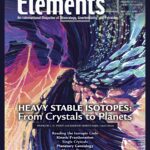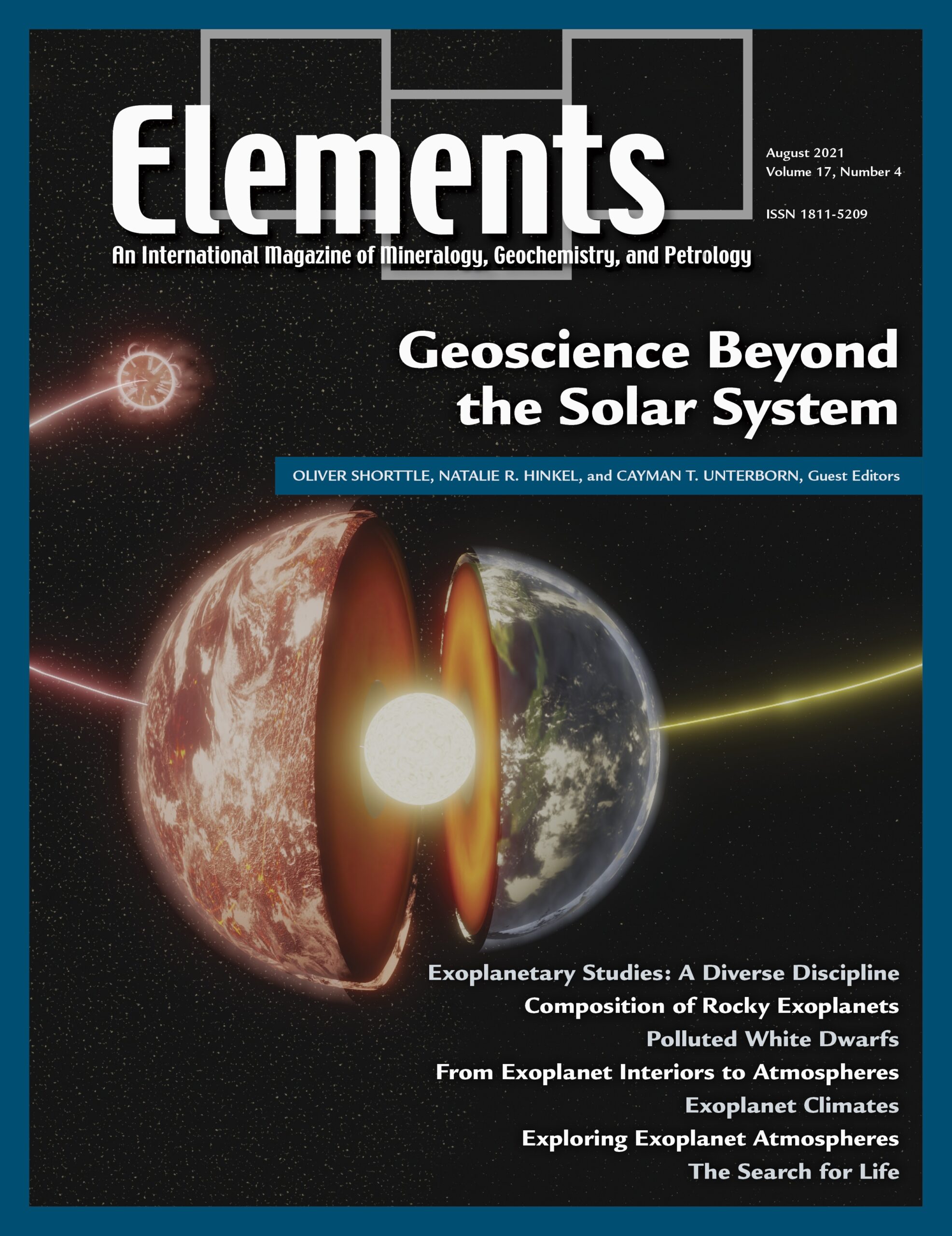
Hydrothermal Fluids, December 2020, Vol. 16, No. 6
June 28, 2024
Heavy Stable Isotopes: From Crystals To Planets, December 2021, Vol. 17, No. 6
June 28, 2024Geoscience Beyond The Solar System, August 2021, Vol. 17, No. 4
$20.00
A revolution in astronomical observation has expanded the horizon of geological processes out from the handful of rocky and icy bodies in our solar system to the now thousands of planets detected around other stars (“exoplanets”). A major result from this burgeoning field is that rocky planets are the most abundant.
Geoscience Beyond The Solar System
August 2021, Vol. 17, No. 4
A revolution in astronomical observation has expanded the horizon of geological processes out from the handful of rocky and icy bodies in our solar system to the now thousands of planets detected around other stars (“exoplanets”). A major result from this burgeoning field is that rocky planets are the most abundant. A remarkable ~11% of Sunlike stars host planets similar in their size and incident flux to Earth, whilst many more planets may exist in states relevant to past periods of terrestrial evolution, either trapped as perpetual magma oceans or locked into a snowball climate. This issue highlights the myriad opportunities exoplanets represent for investigating fundamental geological processes and the opportunities for the geosciences to contribute to this exciting young field.
Why You’ll Love Elements Magazine:
- Expert Contributors: Articles written by renowned researchers in the field of geoscience.
- Engaging Content: Join a community of readers who are passionate about Elements.
- Exceptional Quality: Each issue is printed on high-quality paper with stunning visuals and detailed illustrations that bring complex scientific concepts to life.
Order your copy of the August 2021 issue of Elements magazine today and explore geoscience beyond the solar system.
Related products
-
Medical Mineralogy And Geochemistry, December 2007, Vol. 3, No. 6
$20.00Medical mineralogy and geochemistry is an emergent, highly interdisciplinary field concerned with both normal and pathological interactions between minerals or amorphous inorganic solids and biomolecules or cells within the human body, and the transport and fate of prions and protein toxins in the soil environment. Prior research has, appropriately, focused on the complex genetic and molecular biological aspects, but there is a growing recognition of the vital need for understanding the surface and bulk properties and reactivities, especially at the challenging nanoscale characteristic of biomacromolecules and biominerals.
-
The Nuclear Fuel Cycle – Environmental Aspects, December 2006, Vol. 2, No. 6
$20.00Increasing concerns for the effects of global warming that result from rising greenhouse gas concentrations in the atmosphere have led to a reexamination, even enthusiasm, for nuclear power. Of all the current alternatives to fossil fuels, nuclear fission is the most important source of energy, accounting for 17 percent of the world’s electricity.
-
Fluids in Planetary Systems, January 2005, Vol. 1, No. 1
$20.00Water and other geofluids play an important role in the geochemical and rheological evolution of the Earth and other bodies in the solar system. These fluids are responsible for the formation of hydrothermal mineral deposits, affect eruption behavior in volcanic systems and the geophysical properties of the mantle, and significantly affect the way in which rocks deform and fracture.




